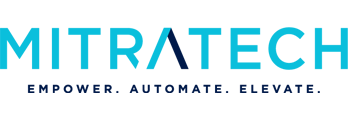Disasters disrupt more than just business operations. They interrupt lives, upend routines, and impact each employee in different ways. Whether facing a natural disaster, workplace violence, or other critical event, the aftermath can bring significant emotional, physical, and logistical challenges.
Effective disaster response goes beyond restoring systems. It means supporting employee wellbeing at every level. By combining business continuity plans, disaster recovery protocols, and timely emergency alerts, companies can guide their teams through disruption with confidence and compassion.
Employee Recovery is Business Recovery
Supporting your workforce during recovery is just as critical as restoring operations. A well-rounded disaster response plan includes steps that help employees manage stress, maintain focus, and stay connected during uncertain times.
Below are three foundational practices to incorporate into your disaster planning to support employee wellbeing and strengthen overall recovery:
- Preparedness before a crisis: Conduct drills, distribute clear communication guides, and pre-equip staff with recovery resources to minimize panic and uncertainty.
- Recognize and manage personal stress: Offer easy-access guidance on breathing techniques, encourage brief breaks, and remind teams to seek support when needed.
- Coordinate family and work plans with strong communication: Facilitate flexible schedules so employees can attend to home needs. Communicate expectations and available resources transparently to build trust and reduce anxiety.
By embedding stress management into your disaster response plan, you not only support employee wellbeing, but also lay the groundwork for a more stable and effective recovery. The next step is putting that support into action through practical, organization-wide strategies.
5 Disaster Response Strategies to Support Your Team
Once the immediate danger has passed, the real work of recovery begins. To move forward effectively, organizations need more than a plan — they need actionable strategies that support both business operations and employee wellbeing. The following five approaches integrate disaster response into the daily rhythm of work, helping teams regain stability, stay connected, and rebuild with purpose.
-
Standardize Crisis Communication
Consistency is key during a crisis. Establish fixed times for status updates using your emergency alert systems, and ensure that all messaging is clear, timely, and unified across channels. Regular updates help reduce uncertainty, prevent misinformation, and show employees that leadership is actively managing the situation. This steady communication rhythm provides a sense of structure and reassurance, helping teams stay focused amid disruption.
-
Reinforce Operational Structure with Defined Schedules
A disrupted environment can make even simple routines feel overwhelming. Reinforce stability by aligning work schedules with your business continuity plan. This might include staggered shifts, hybrid work rotations, or temporary adjustments to hours. These structures help balance workloads while giving employees the flexibility they need to address personal recovery — whether it’s repairing a home, caring for loved ones, or simply adjusting to new circumstances.
-
Incorporate Team Check-Ins Into Continuity Protocols
Recovery is both operational and human. Make routine team check-ins part of your continuity protocols to ensure ongoing connection and support. These moments provide an opportunity for managers to assess how individuals are coping, gather feedback, and offer assistance. They also help rebuild a sense of community and purpose, which can be easily lost in the chaos following a disaster.
-
Schedule Short Recovery Breaks Into the Workday
In high-stress environments, even a short break can go a long way. Encourage employees to take regular, intentional pauses throughout the day. Whether it’s a quick walk, a hydration reminder, or five minutes of quiet time, these breaks help reduce fatigue, boost mental clarity, and sustain long-term productivity. Normalize these pauses as part of your workplace culture during recovery.
-
Align Team Objectives With Recovery Milestones
As operations ramp back up, align team goals with specific recovery milestones. Break down large objectives into manageable steps that reflect your organization’s disaster recovery timeline. Celebrating small wins not only motivates your team but also builds a shared sense of progress. When employees see how their work contributes to broader recovery goals, it reinforces resilience, morale, and a renewed sense of purpose.
Building Resilient Teams Through Thoughtful Disaster Response
Disaster recovery works best when it brings together strong operations and resilient people. Recovery isn’t only about getting systems back online. It’s about helping the people behind those systems feel supported, informed, and ready to move forward.
Communication matters. So does planning. But most of all, recovery depends on care. When people come first, recovery becomes more than a return to business. It becomes a chance to build trust, stability, and strength for whatever comes next.



